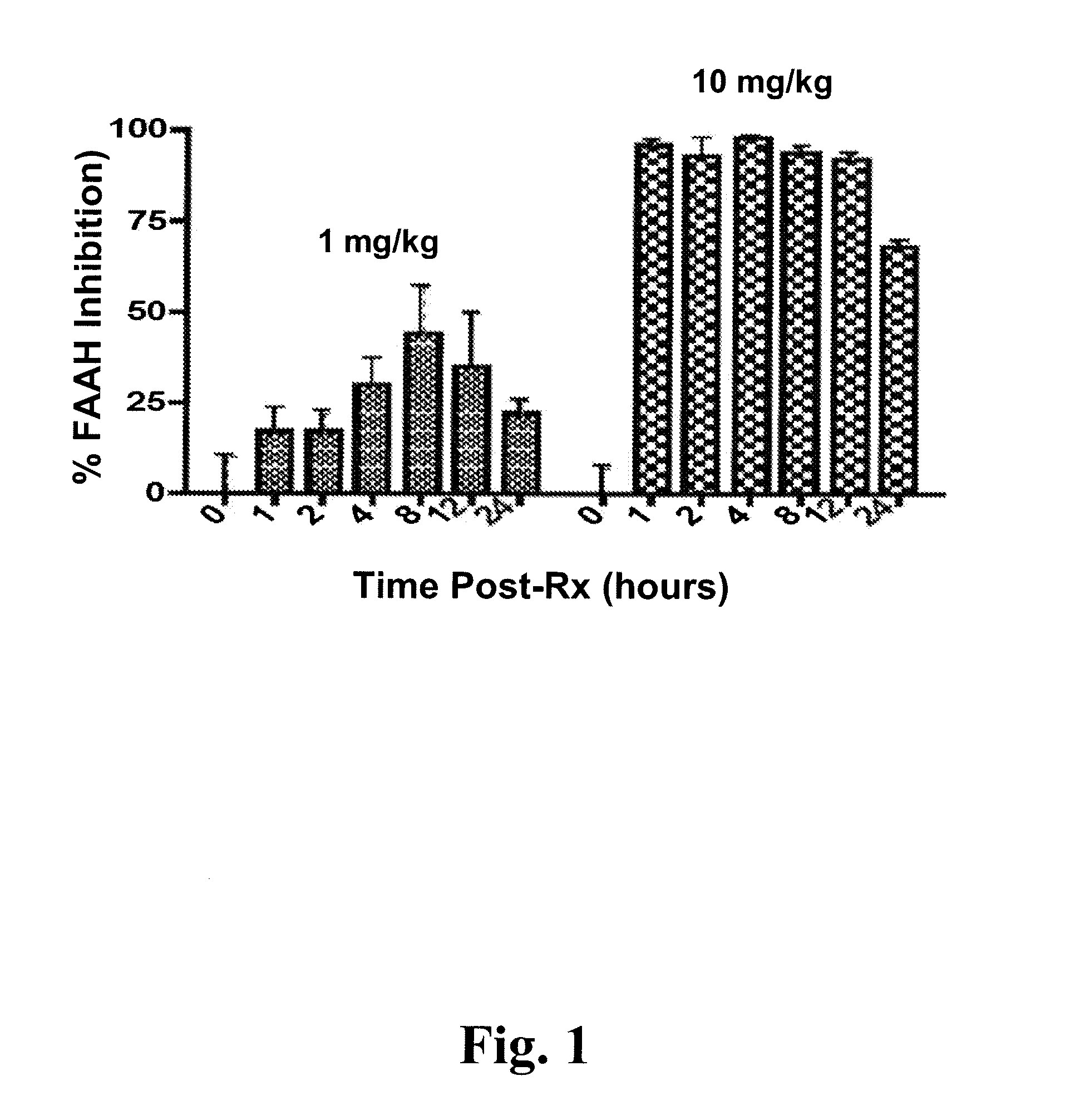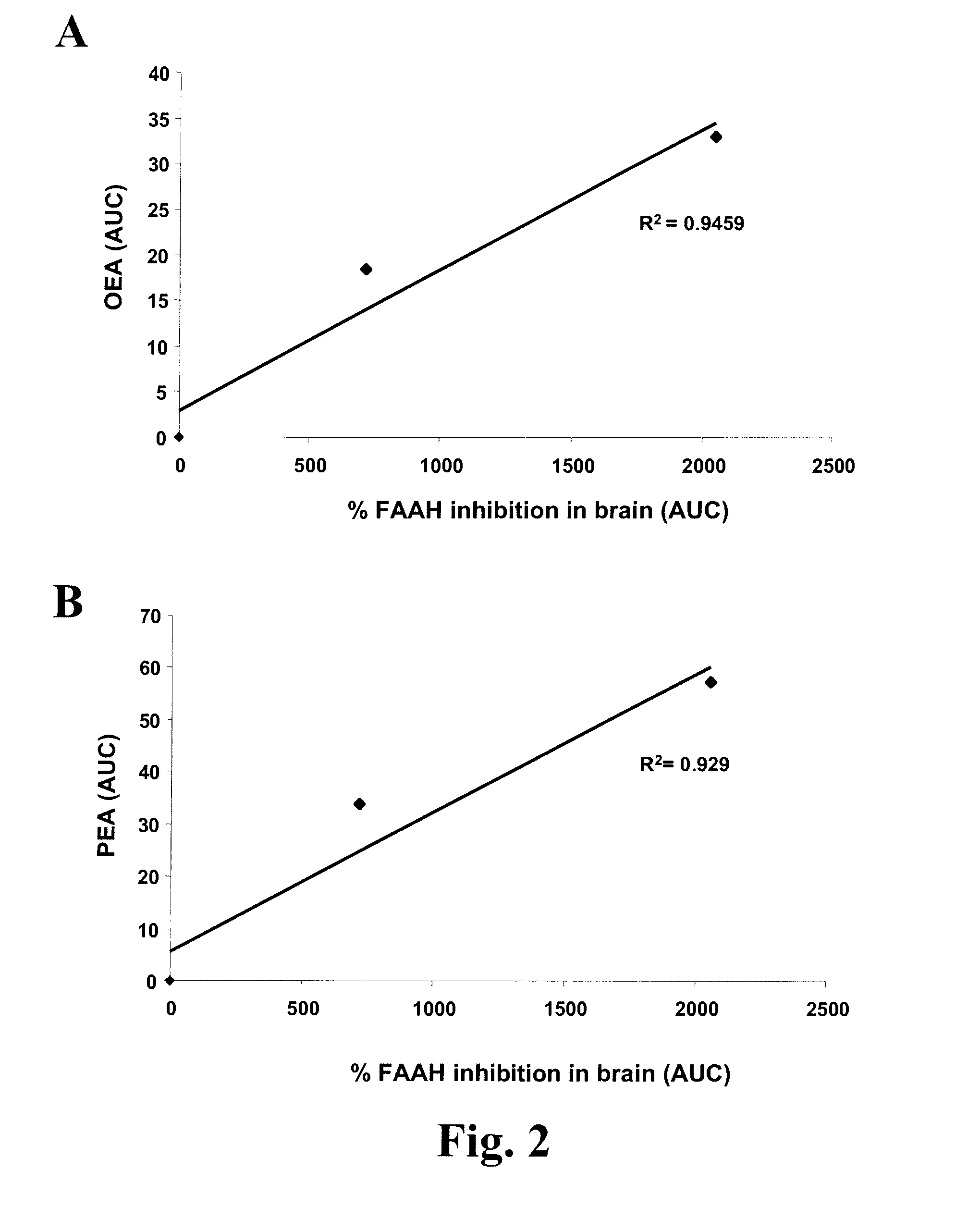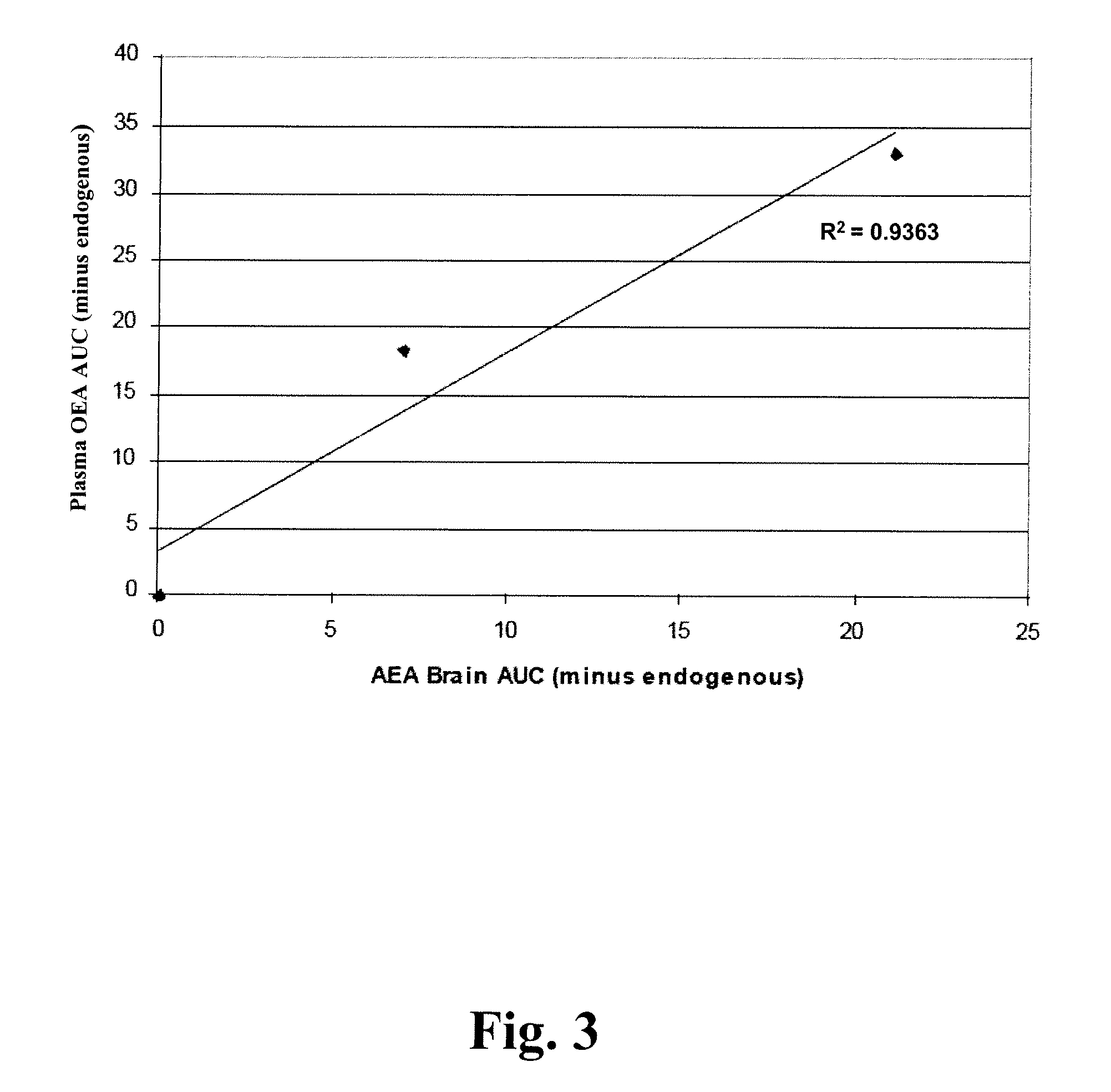Methods for determining effective doses of fatty acid amide hydrolase inhibitors in vivo
a technology of fatty acid amide hydrolase and effective dose, which is applied in the direction of biocide, drug composition, instruments, etc., can solve the problems of hypothermia and hyperphagia, and achieve the effect of reducing disease symptoms, reducing and/or alleviating symptoms
- Summary
- Abstract
- Description
- Claims
- Application Information
AI Technical Summary
Benefits of technology
Problems solved by technology
Method used
Image
Examples
examples of faah
Inhibitors
[0088] In the following description of FAAH inhibitors suitable for use in the methods described herein, definitions of standard chemistry terms may be found in reference works (if not otherwise defined herein), including Carey and Sundberg “ADVANCED ORGANIC CHEMISTRY 4TH ED.” Vols. A (2000) and B (2001), Plenum Press, New York. Unless otherwise indicated, conventional methods of mass spectroscopy, NMR, HPLC, protein chemistry, biochemistry, recombinant DNA techniques and pharmacology, within the ordinary skill of the art are employed. Unless specific definitions are provided, the nomenclature employed in connection with, and the laboratory procedures and techniques of, analytical chemistry, synthetic organic chemistry, and medicinal and pharmaceutical chemistry described herein are those known in the art. Standard techniques can be used for chemical syntheses, chemical analyses, pharmaceutical preparation, formulation, and delivery, and treatment of patients.
[0089] The F...
example 1
Plasma Levels of FAAs are Highly Correlated with FAAH Inhibition in the Brain
[0381] Due to a poor correlation between plasma exposure of KDS-4103 and in vivo activity, we sought a peripheral bio-marker that correlated with FAAH inhibition in the brain. Anandamide was considered as a possible bio-marker in plasma since changes in anandamide levels appear to mediate the pharmacological effects of FAAH inhibitors. However, circulating levels of anandamide in rodents and humans have typically been found at extremely low levels in vivo and, in most cases, were below the limit of quantitation of our LC-MS / MS methods (0.1 ng / ml).
[0382] We hypothesized that plasma levels of more abundant FAEs, such as OEA and PEA, would correlate with FAAH inhibition in the brain such that escalating doses of a FAAH inhibitor would be paralleled by increased levels of these FAEs in plasma. Moreover, complete FAAH inhibition was expected to cause a maximal increase in FAE levels with no further increases o...
example 2
KDS-4103 Causes Prolonged Elevation of Plasma OEA Levels in Primates
[0389] We established a clear relationship between inhibition of FAAH activity in brain and elevation of plasma FAA levels by administering KDS-4103 in rats. Thus, we wished to examine the ability of KDS-4103 to inhibit FAAH in primates vis-a-vis elevation of OEA levels in plasma.
[0390] KDS-4103 at doses of 50-1500 mg / kg, or vehicle, was administered orally to cynomolgus monkeys. Afterwards, a time course of plasma OEA levels was determined for each subject by obtaining a plasma sample at 0.5, 1, 2, 4, 8, 12, and 24 hours post-administration. As shown in FIG. 2, in subjects administered each dose of KDS-4103, plasma OEA levels were clearly elevated two hours after administration, peaked at four hours, and remained elevated at all subsequent time points examined. On the basis of these data, we concluded that KDS-4103 is highly effective for inhibiting FAAH activity in primates.
PUM
| Property | Measurement | Unit |
|---|---|---|
| time | aaaaa | aaaaa |
| time | aaaaa | aaaaa |
| time | aaaaa | aaaaa |
Abstract
Description
Claims
Application Information
 Login to View More
Login to View More - R&D
- Intellectual Property
- Life Sciences
- Materials
- Tech Scout
- Unparalleled Data Quality
- Higher Quality Content
- 60% Fewer Hallucinations
Browse by: Latest US Patents, China's latest patents, Technical Efficacy Thesaurus, Application Domain, Technology Topic, Popular Technical Reports.
© 2025 PatSnap. All rights reserved.Legal|Privacy policy|Modern Slavery Act Transparency Statement|Sitemap|About US| Contact US: help@patsnap.com



